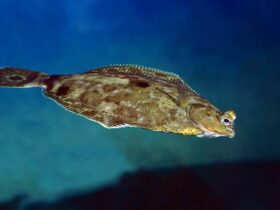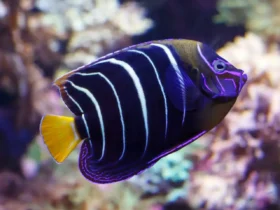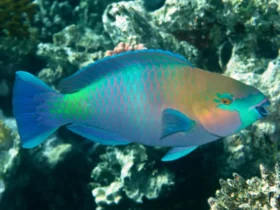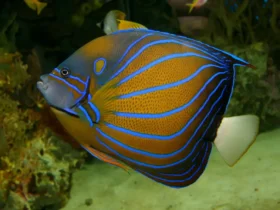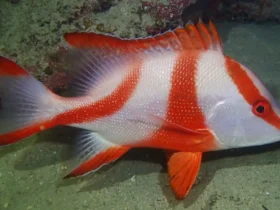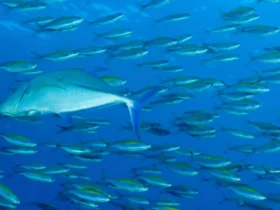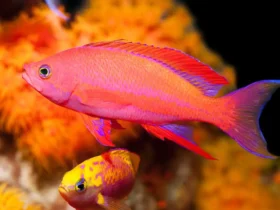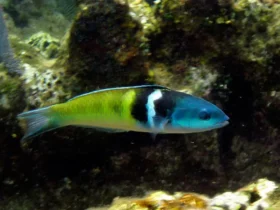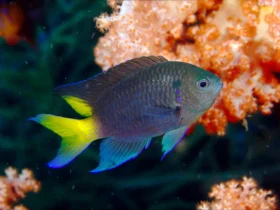The Regal Angelfish (Pygoplites diacanthus) is one of the cutest ornamental fish and a true embodiment of grace and beauty in the underwater world. With its vibrant coloration, intricate patterns, and majestic presence, this stunning fish has captivated the hearts of marine enthusiasts and aquarists worldwide.
Regal Angelfish images
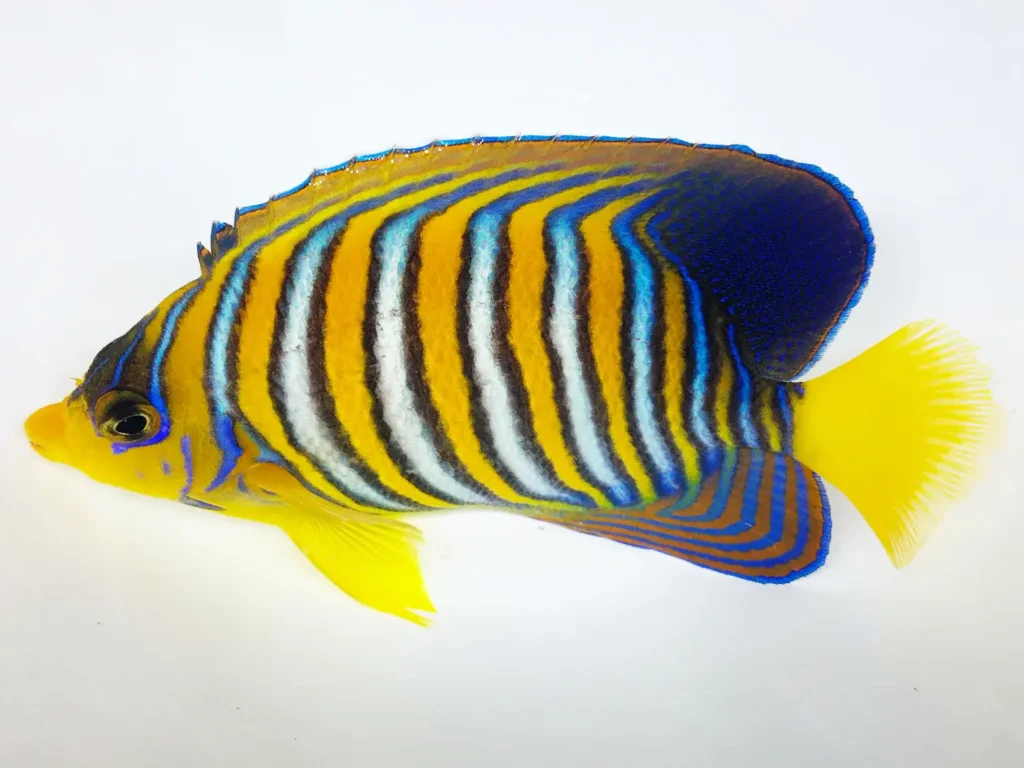
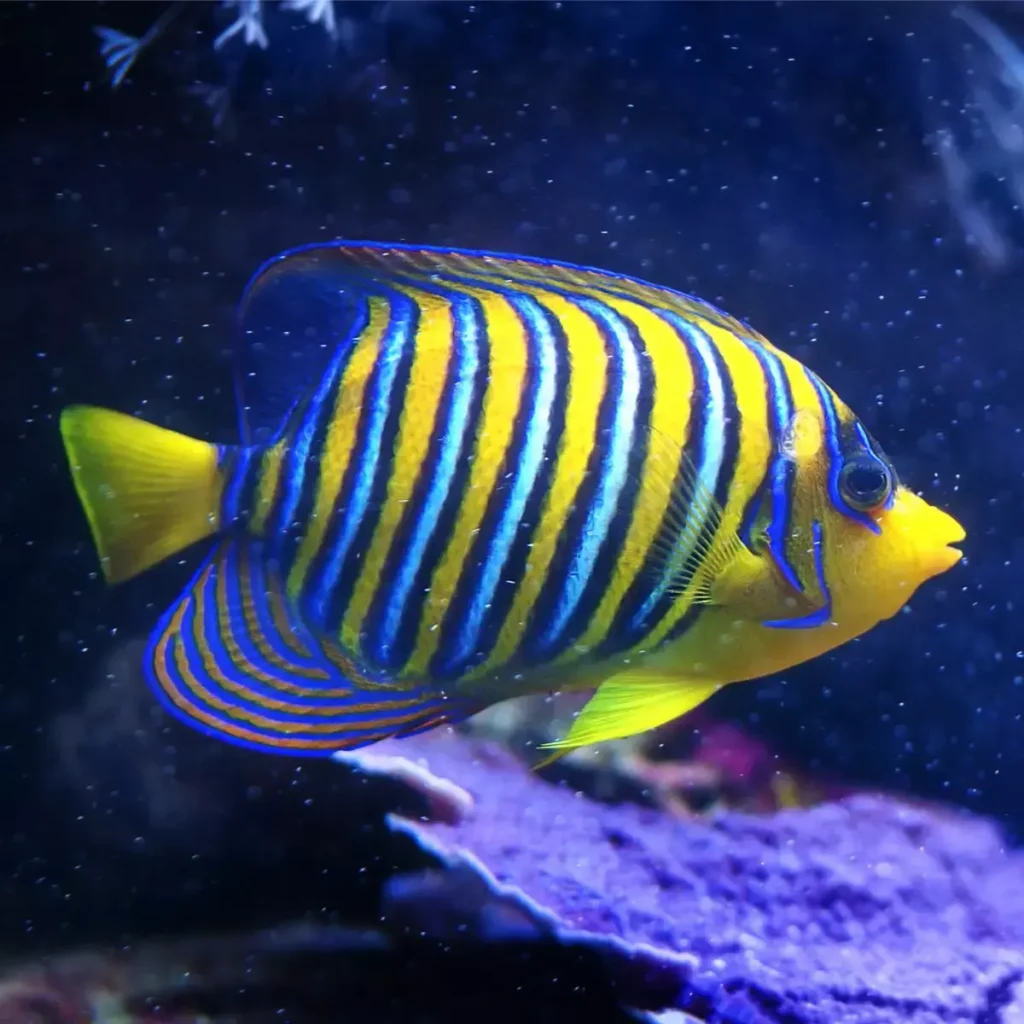
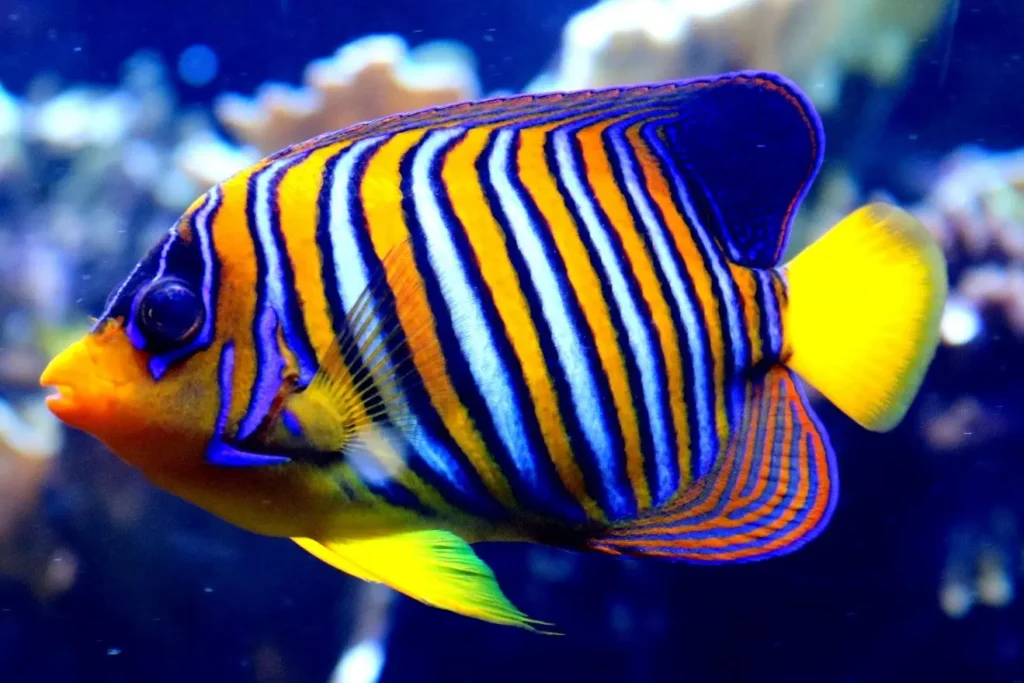

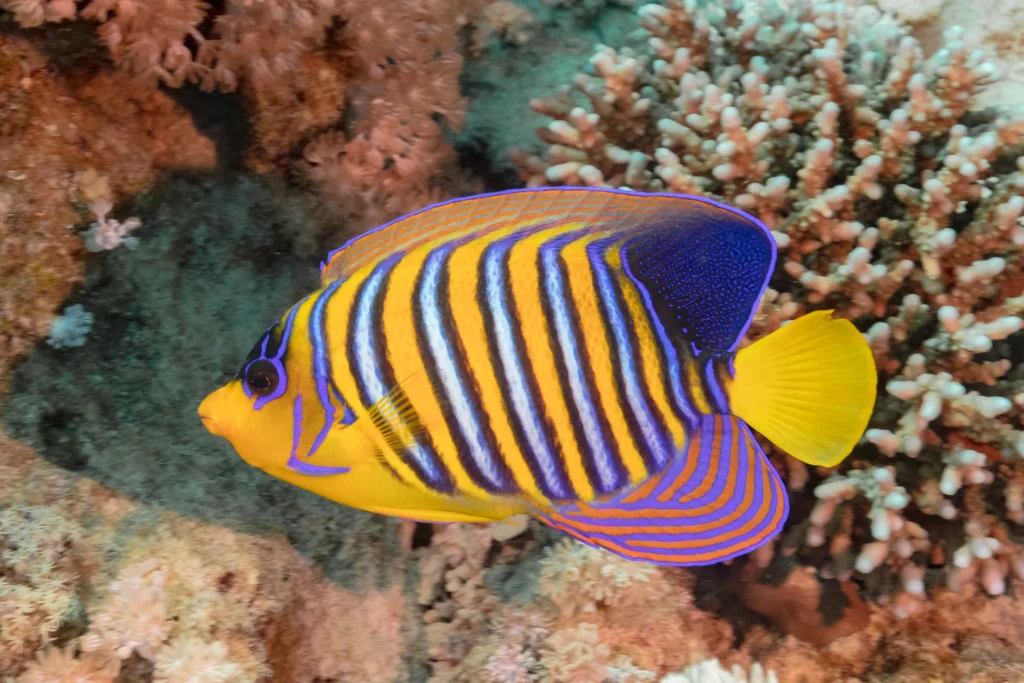

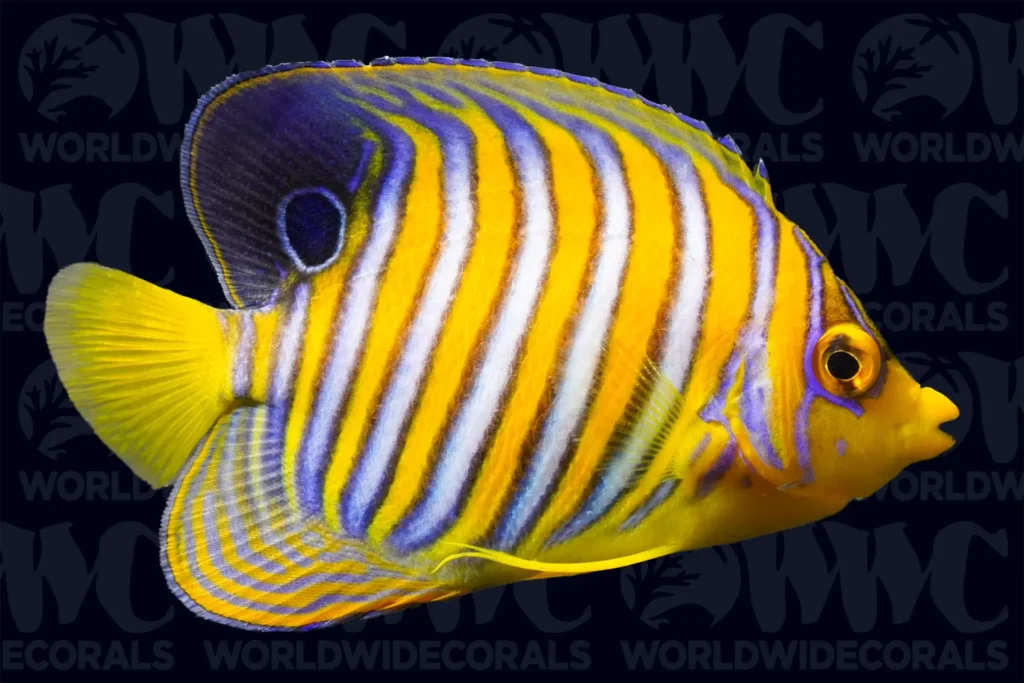
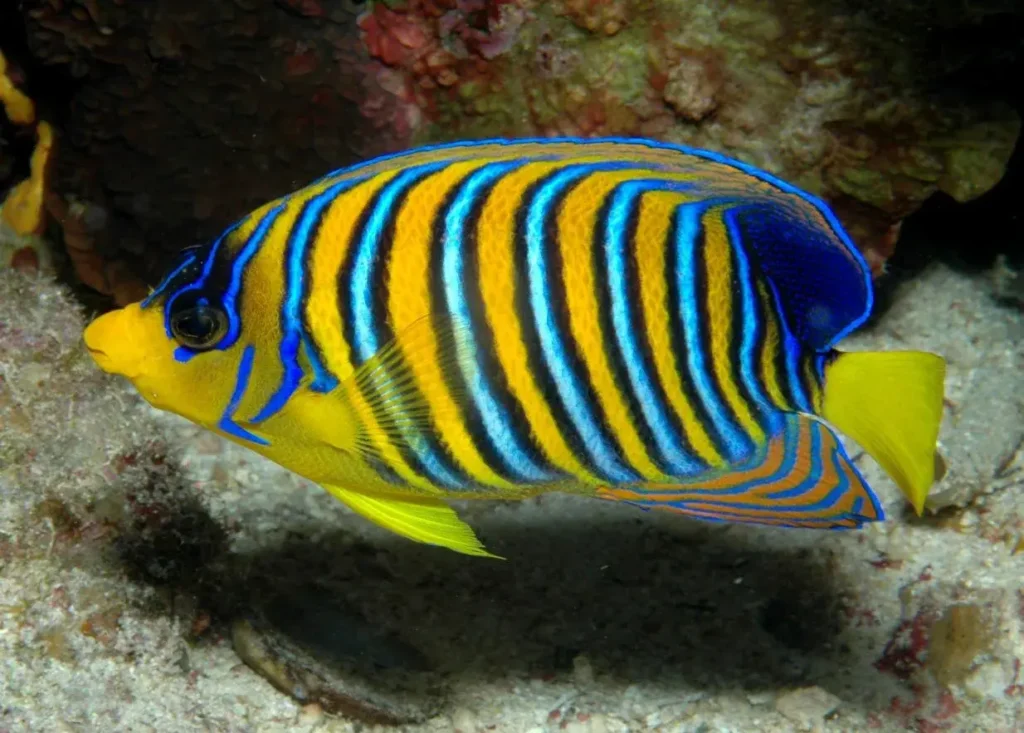
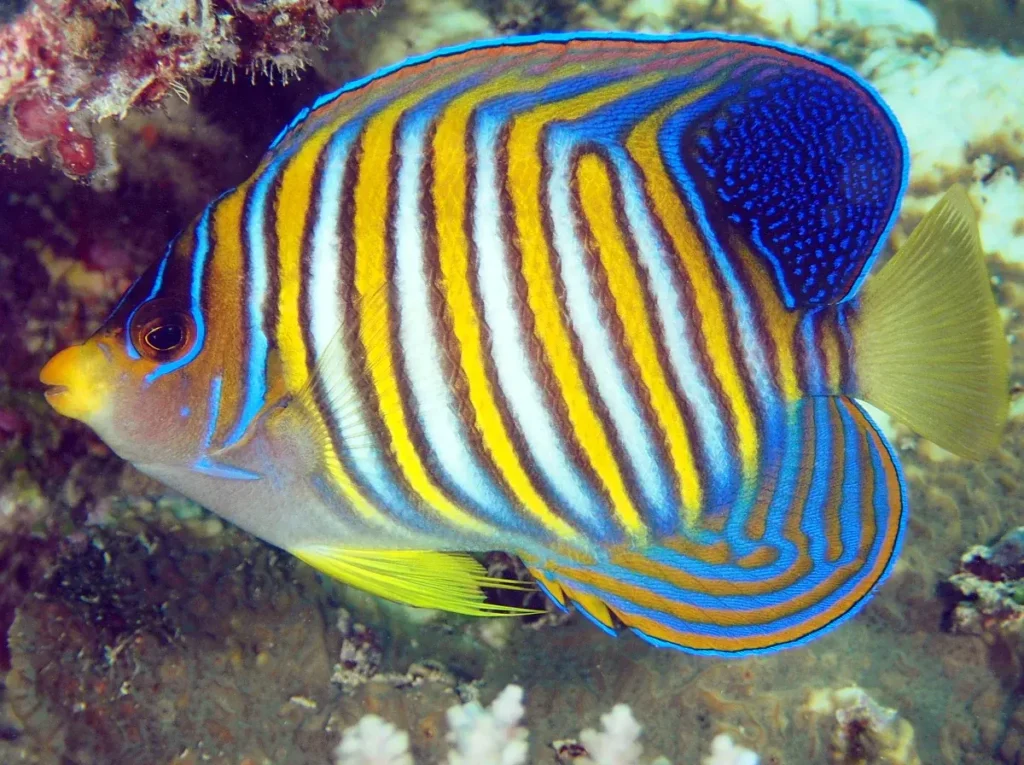
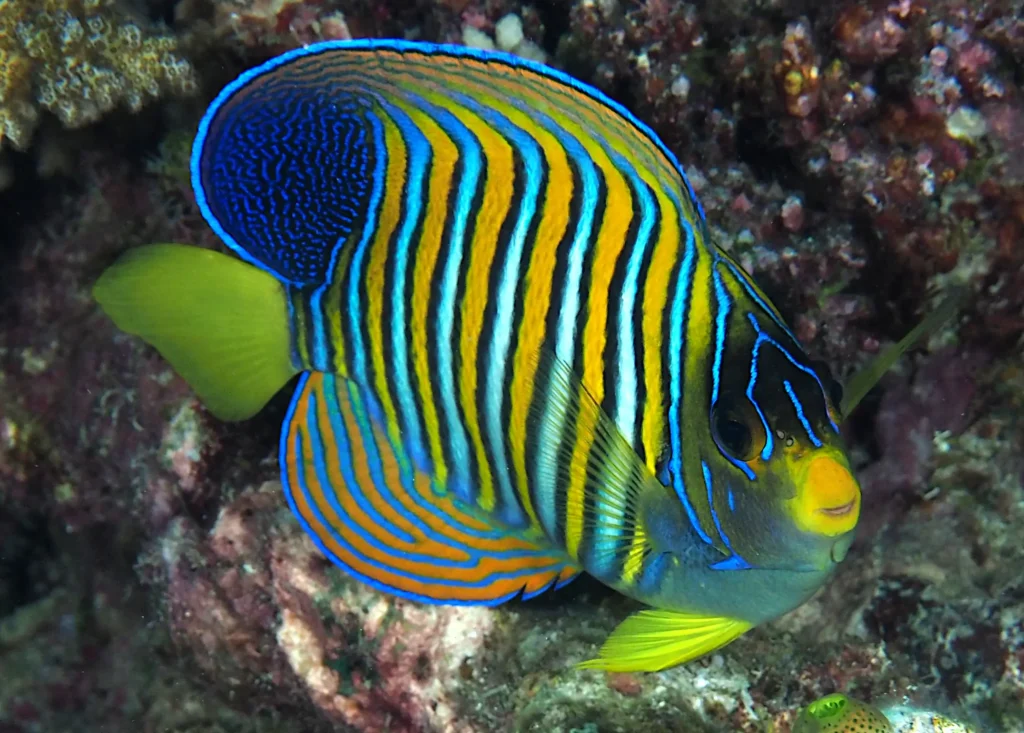
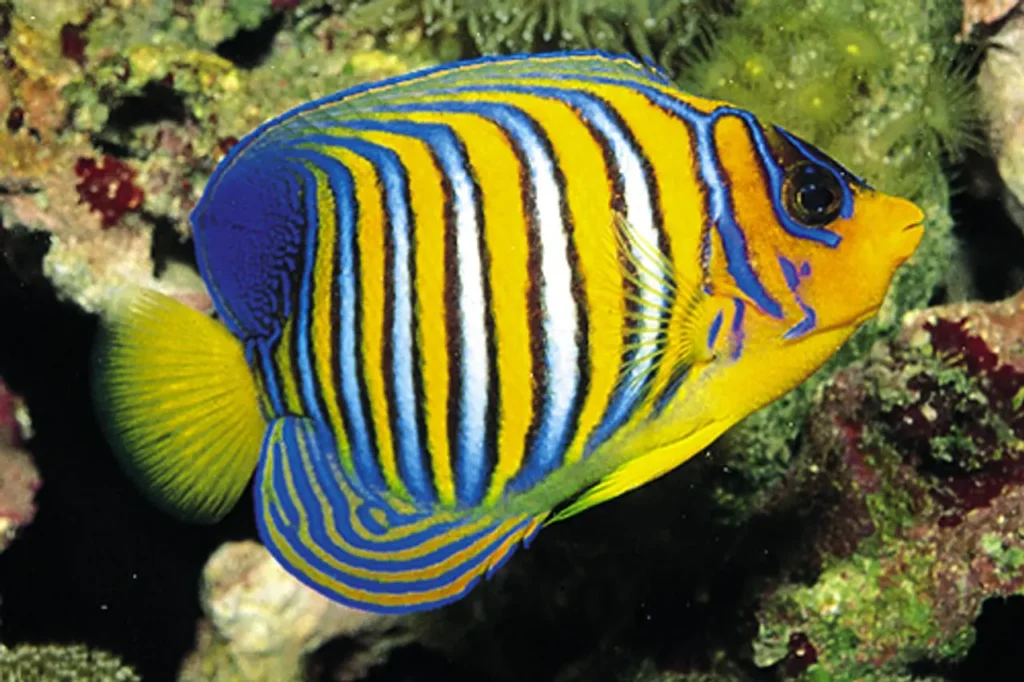
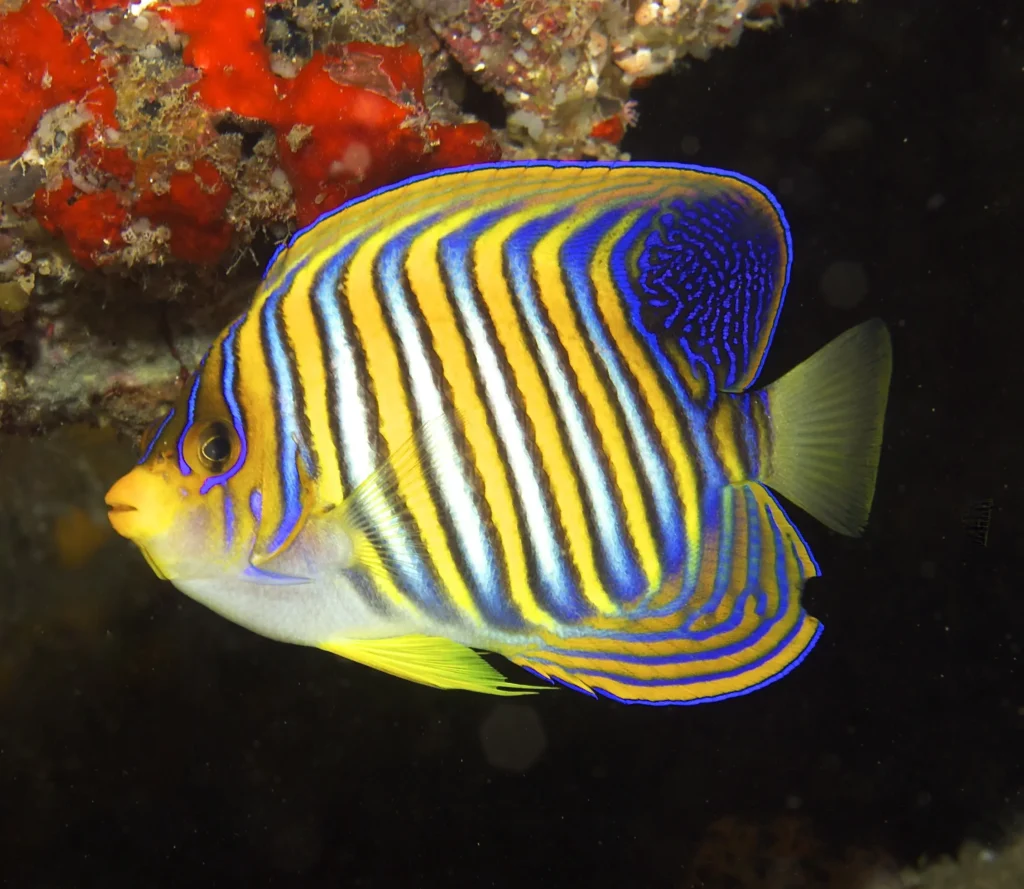
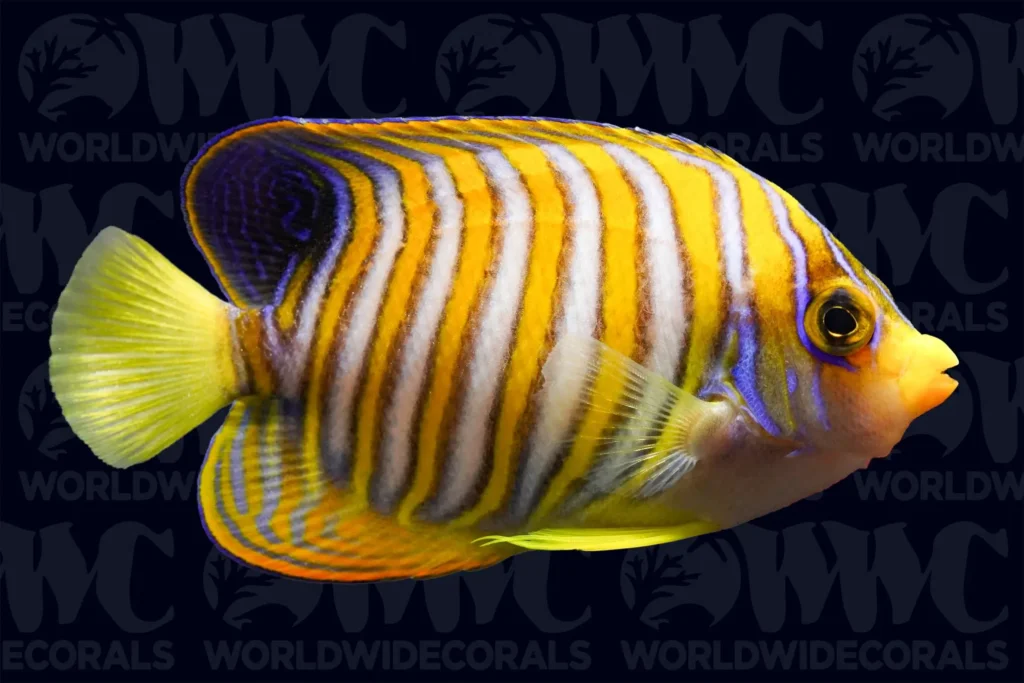
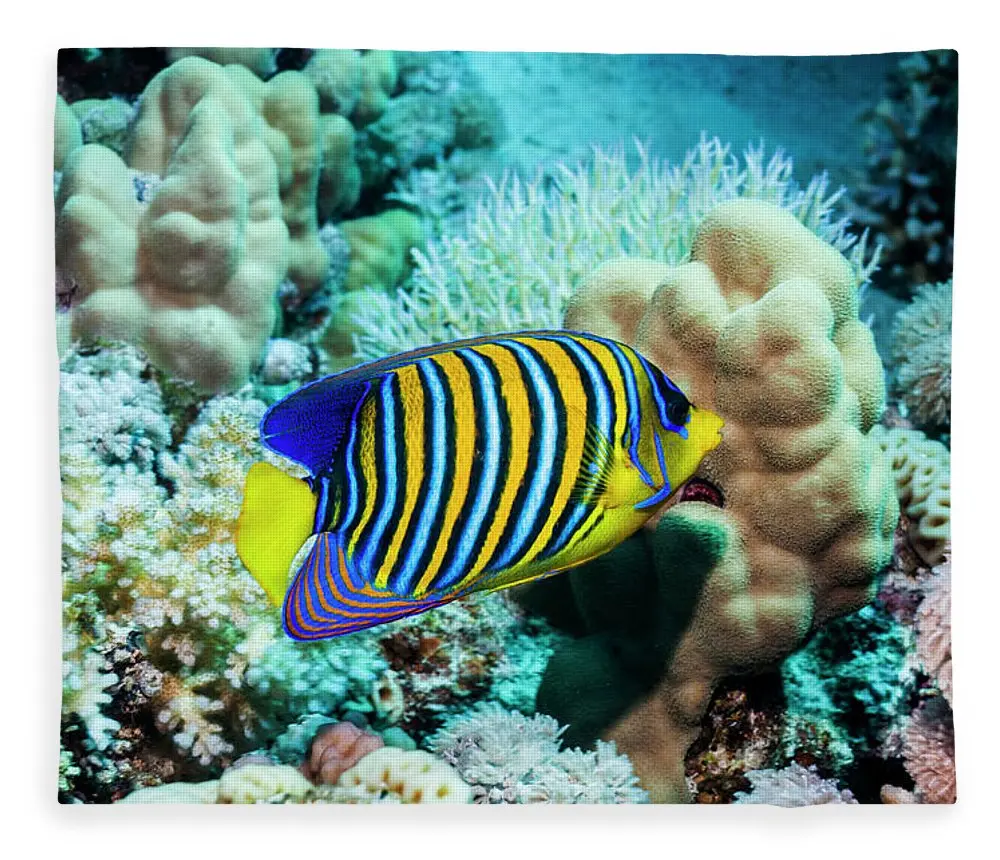
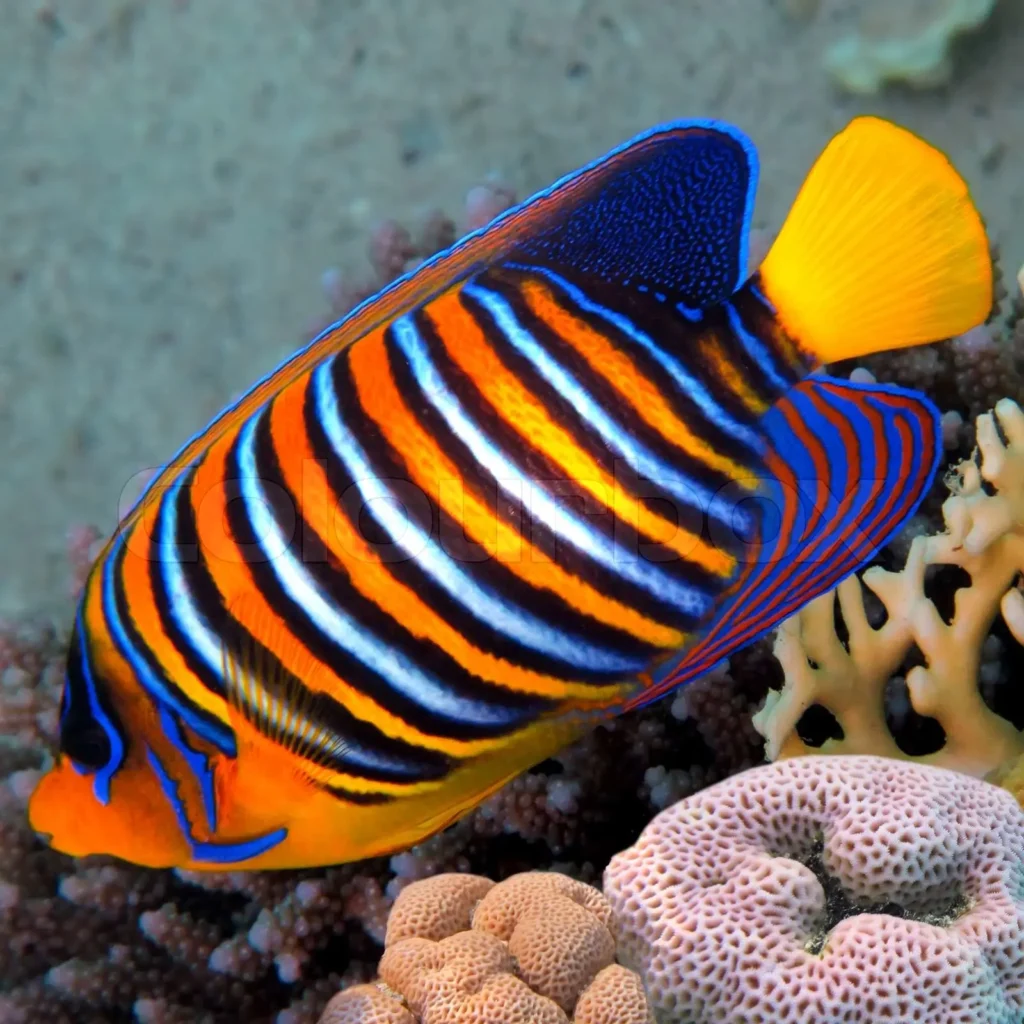
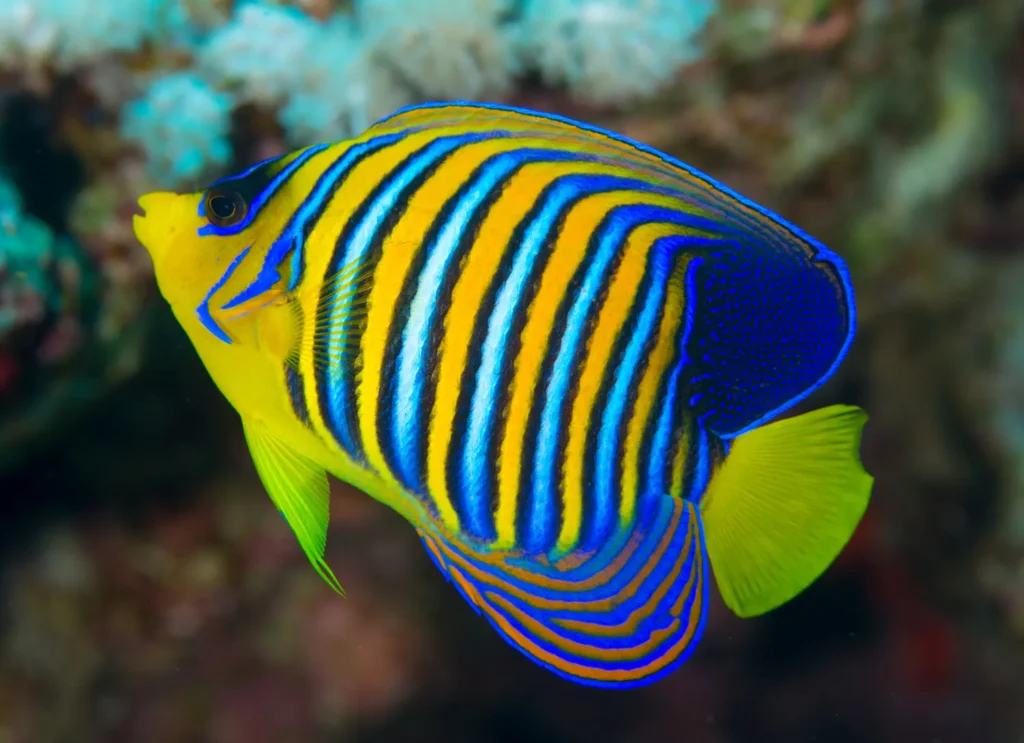
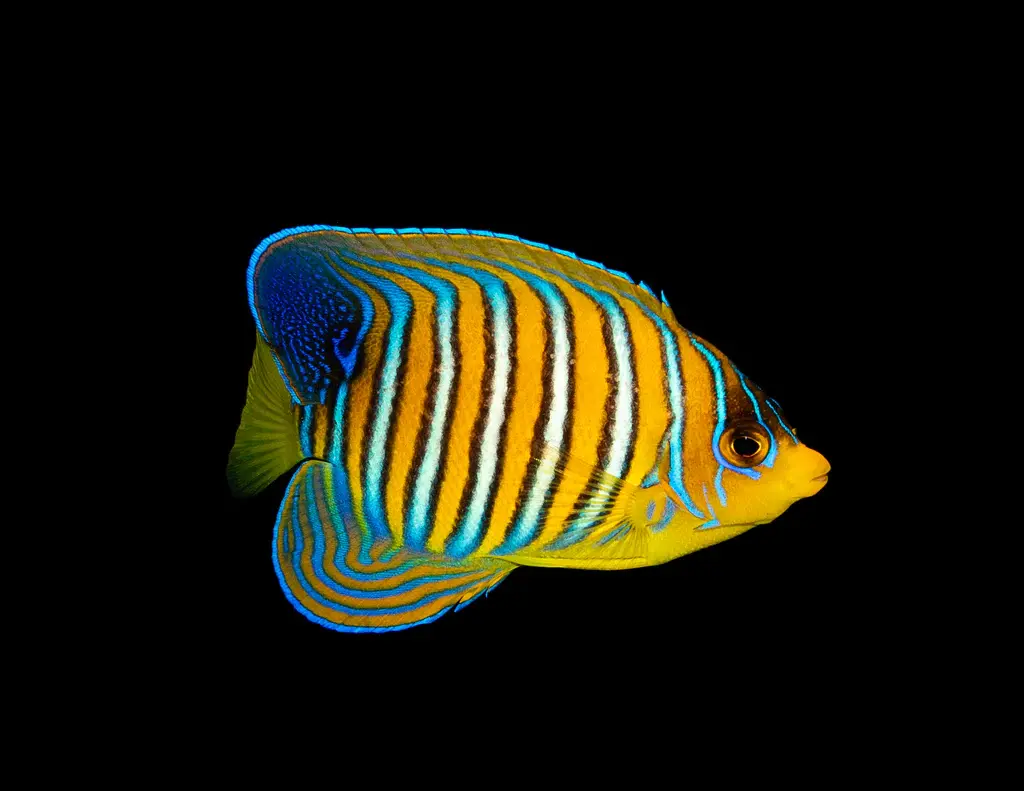
In this article, we will explore the fascinating world of the Regal Angelfish, delving into its appearance, natural habitat, behavior, care requirements, and the joy it brings to aquariums.
Appearance and Distinctive Features
The Regal Angelfish is renowned for its striking coloration and intricate patterns. Its body showcases a vibrant electric blue color, adorned with vivid yellow-gold bands that extend vertically from head to tail. These bands create a captivating contrast against the fish’s deep blue background, giving it an aura of regal elegance. Its dorsal and anal fins are highlighted with a vibrant splash of yellow, further enhancing its visual appeal.
Natural Habitat and Distribution
The Regal Angelfish is predominantly found in the Indo-Pacific region, including the waters around the Great Barrier Reef, the Red Sea, and the Maldives. It inhabits coral-rich areas, where it seeks shelter among the intricate formations. These fish thrive in warm tropical waters with stable conditions, such as temperatures ranging from 72°F to 78°F (22°C to 26°C) and pH levels around 8.1 to 8.4.
Behavior and Social Structure
Regal Angelfish are known for their solitary nature, often spotted alone or in pairs. They are generally peaceful towards other fish species but may display territorial behavior, especially when it comes to defending their feeding grounds or mating partners. Observing their graceful movements as they glide through the water is a true spectacle, reflecting their regal nature.
Care and Aquarium Requirements
Providing a suitable environment for the Regal Angelfish is crucial to its well-being. They require a spacious aquarium with ample swimming space, as well as plenty of hiding spots and live rock formations that mimic their natural habitat. A well-established reef tank with stable water parameters, including temperature, salinity, and pH levels, is essential. Additionally, maintaining excellent water quality and offering a varied diet will contribute to their overall health and longevity.
Feeding Habits and Diet
In the wild, Regal Angelfish primarily feed on a diet consisting of sponges, algae, and small invertebrates. In aquariums, it is important to replicate this diet by providing a balanced mix of high-quality marine flakes, pellets, and frozen or live foods. Supplementing their diet with vegetable matter, such as spirulina-based flakes or seaweed sheets, will help mimic their natural feeding habits.
Conservation Status and Considerations
The Regal Angelfish is not currently listed as endangered; however, the degradation of coral reefs and overfishing pose potential threats to its population. It is crucial to support sustainable practices and avoid purchasing specimens obtained through harmful collection methods. Choosing captive-bred Regal Angelfish, when available, contributes to the conservation of wild populations and reduces environmental impact.
The Regal Angelfish stands as a true marvel of the ocean, captivating all who have the privilege of witnessing its beauty. From its vibrant colors to its graceful demeanor, this majestic fish adds a touch of elegance to any aquarium. By understanding its natural habitat, care requirements, and the importance of conservation efforts, we can ensure the preservation of this regal species for generations to come, allowing their magnificence to continue enchanting marine enthusiasts worldwide.
